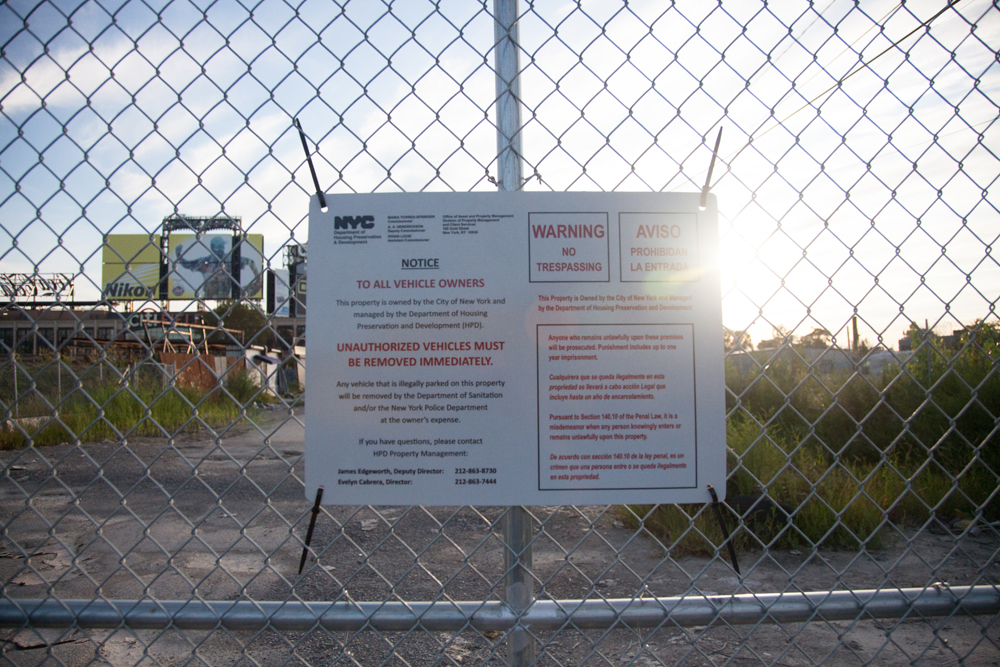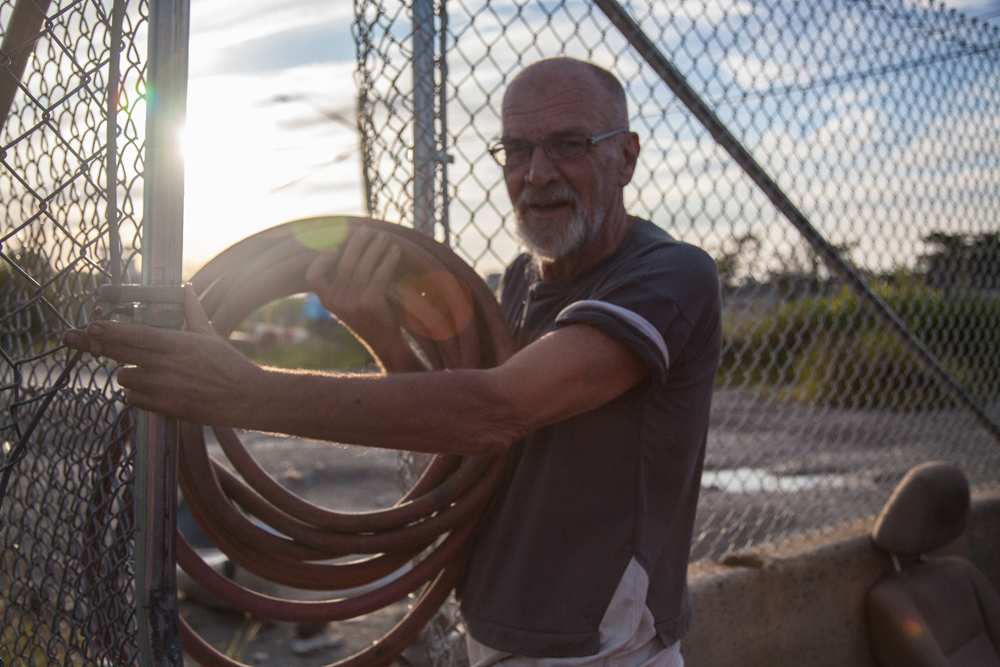Zbigniew “Joe” Zolkowski grabbed a discarded hose from a pile of rubble as he approached the hole in the gate blocking off 36th Avenue in Willets Point and hung it around his neck like a scarf.
About five yards away, a Department of Housing Preservation and Development sign read, “Anyone who remains on unlawfully upon these premises will be prosecuted. Punishment includes up to one year imprisonment.”
Undeterred or perhaps unaware of the sign, the conceptual artist Zolkowski slipped behind the fence to what he deemed his studio — an abandoned lot leading to a swamp.
“I can’t let an opportunity like this go by,” he said.
Out of the parties to be affected by the city’s erection of gates surrounding the southern part of the Iron Triangle, Zolkowski is an outlier. When the scrappy installation artist first started coming to the auto shops in Willets Point to fix his car, he fell in love with the sense of “urban decay.” So he turned an empty lot containing swampland into an art project using recycled parts from the surrounding chop shops.
Now his installation is locked in legal purgatory.
When the city erected the gates early in July as part of its ambitious plan to transform the southern portion of Willets Point into a megadevelopment, Zolkowski got locked out of the lot he had been using as an improvised studio space.
While HPD’s street closures are financially hurting the shop owners who remain in the Iron Triangle and cutting them off from emergency response services, Zolkowski on the other hand hasn’t let them stop him from returning to his work.
“Artists always have no studios, no places to work. They’re always scrounging,” Zolkowski said. “It’s a nice space because I like to work with the environment – the things that are being thrown out here that you find in the street. [Robert] Rauschenberg called them ‘come by’s,’” he said.
“The Golden Pond,” Zolkowski’s sculpture on 36th Avenue, rises about 10 feet out of the swamp muck. He fashioned an altar in the shape of a cross out of recycled shelving, light fixtures, exhaust pipes and other metal tubes that he spray-painted gold. Towering over the swamp at the top of the altar, sits a gold-coated baby doll.
Zolkowski said that when the city sent bulldozers to flatten a different part of the Iron Triangle where he had built another altar they refused to level his piece out of superstition.
“They don’t want to touch it because they thought it was voodoo. They thought if they disturb it that ghosts would just descend on them. So it’s sitting there with everything else graveled up with bulldozer. They don’t touch it. They said there were animals sacrifices — all kinds of things,” he said.
Shortly after saying that he let it slip that he had placed the mummified remains of a dead street cat at the top of that altar.
From its abundance of discarded and decaying objects, the landscape of Willets Point puts Zolkowski’s eccentricity on full display. He said that he wades regularly into the muddy bog in order to work on his art. He even produced photos of an art piece he did that involved him coating his entire body in the black mud from the Willets Point swamp.
In 2008, city-commissioned tests of Willets Point soil found it to be tainted by carcinogenic toxins and dangerous levels of lead and mercury in the groundwater. Zolkowski is a skeptic. He claims that the water is healing — that it will change your whole personality.
Despite having a very different outlook on the land, Zolkowski said that he’s become close with the mechanics in the area. On Aug. 31, he came in solidarity to the meeting of nearby auto shop owners who are organizing after the street closures hurt them financially.
Asked if he is worried that the city will inevitably develop over the land where his art sits, Zolkwoski said he is, but that he will just have to adapt. Unlike the mechanics, Zolkowski can always find another abandoned section of the city to build his recycled art projects.
“If I don’t have this, I have the street.”





































